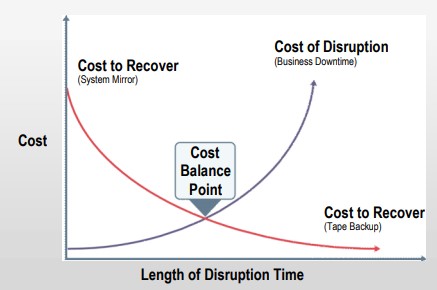
ITS believes that the cornerstone of a well-developed and mature system is the ability to recover after a problem, contingency or disaster. This belief drives all aspects of our solution development and system security.
An Information Technology Disaster Recovery Plan (IT DRP) and a Business Continuity Plan (BCP) should be developed in conjunction. This process begins with a Business Impact Assessment (BIA), which assigns priorities and establishes Recovery Time Objectives (RTO) and Recovery Point Objectives (RPO) for IT systems. Technology recovery strategies should be developed to restore hardware, applications, and data in time to meet the recovery needs of the business.
ITS can review and help you develop contingency plan or a disaster recovery plans to ensure compliance with best practice guidelines, such as NIST Special Publication 800-34; “Contingency Planning Guide for Information Technology Systems.”


As an organization, you should determine the optimum point to recover the information system while balancing the cost of system inoperability against the cost of resources required for restoring the system and its overall support for critical mission/business processes.
The longer a disruption continues, the more costly it can become to the organization. Conversely, the shorter the RTO, the more expensive the recovery solutions cost to implement. For example, if the system must be recovered immediately, zero downtime solutions and alternate processing site costs will be much higher, whereas a low-impact system with a longer RTO would be able to implement a less costly simple tape backup system.
Plotting the cost balance points will show an optimal point between disruption and recovery costs. The intersecting point shown in the figure will be different for every organization and system based on financial constraints and operating requirements.
ITS has the experience and knowledge to assist you in your disaster recovery planning at all levels of your business.